It’s one of the most amazing temples ever built, and where else could it be located than a country in North Africa?
In this post, you’ll discover the ultimate list of facts about the Temple of Hatshepsut, one of the most famous buildings in Egypt.
1. What is the Temple of Hatshepsut?
When we think of Ancient Egypt, we instantly think of majestical pyramids in the middle of the desert such as the Great Pyramids of Giza. The Ancient Egyptians also numerous other types of monuments, including massive temples, mostly to honor the Gods and let the pharaoh’s reign be remembered forever.
The Temple of Hatshepsut is a mortuary temple that was constructed by Pharaoh Queen Hatshepsut, who ruled over Egypt in the 18th dynasty.

2. Where was the temple built?
The temple is also referred to as the Djeser-Djeseru and is built below a massive cliff at Deir el-Bahari, a complex of mortuary temples on the west bank of the River Nile. This is part of the great Theban Necropolis.
It’s located right across from the city of Luxor in Upper Egypt, and not too far from this other remarkable necropolis, the “Valley of the Kings,” where numerous pharaohs were buried over a period of 500 years.
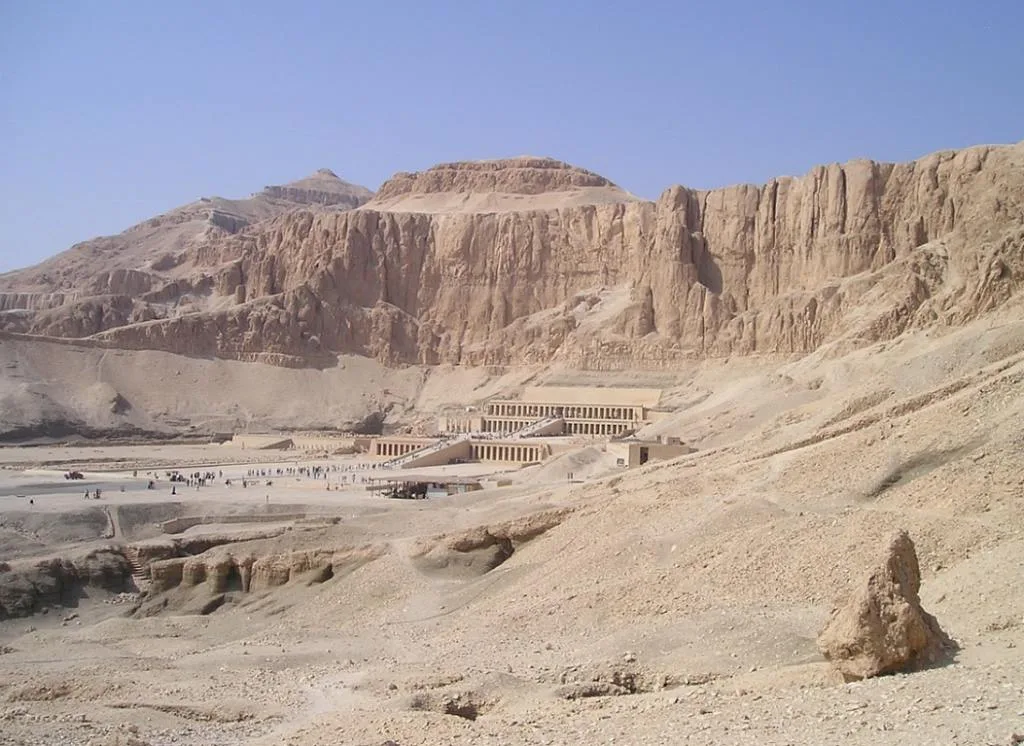
3. When was the temple built?
Hatshepsut was an Egyptian Pharaoh who reigned over Egypt in the 18th Dynasty, which lasted between 1549/1550 and 1292 B.C.
Hatshepsut was the daughter of Thutmose I (1520-1492 BCE) and his wife Ahmose, and she is considered to be one of the most successful pharaohs in Egyptian history both in terms of peace and economic success.
She commissioned the construction of the temple soon after she started her reign in 1479 B.C. and construction lasted about 15 years. She passed away in 1458 B.C.
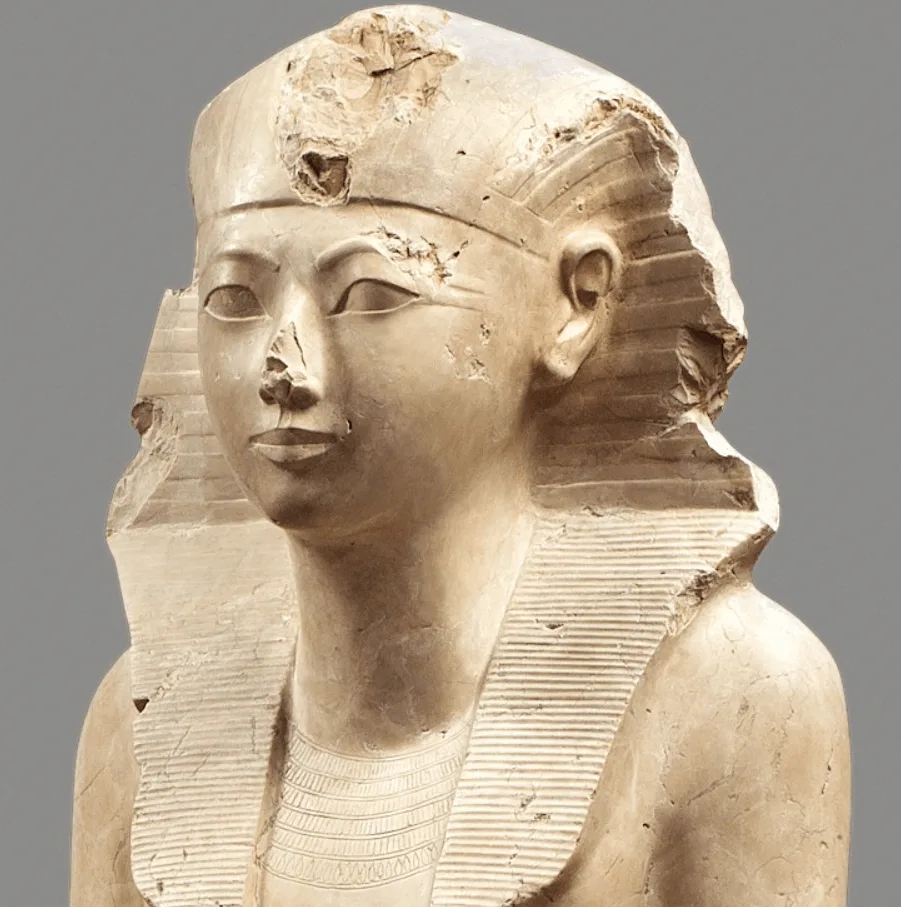
4. Hatshepsut was the second female Pharaoh

Hatshepsut was the 5th pharaoh of the 18th dynasty and as remarkably the second recorded female pharaoh to rule over Egypt. The first recorded female pharaoh was Sobenefery who ruled between 1806 and 1802 B.C.
One of the most interesting facts about the Temple of Hatshepsut is that she was elevated to the position of the wife of the god Amun, one of the most significant ancient Egyptian deities, and the most important status an Egyptian woman could achieve.
Therefore, the Temple of Hatshepsut wasn’t just dedicated to her, but also to the god Amun.
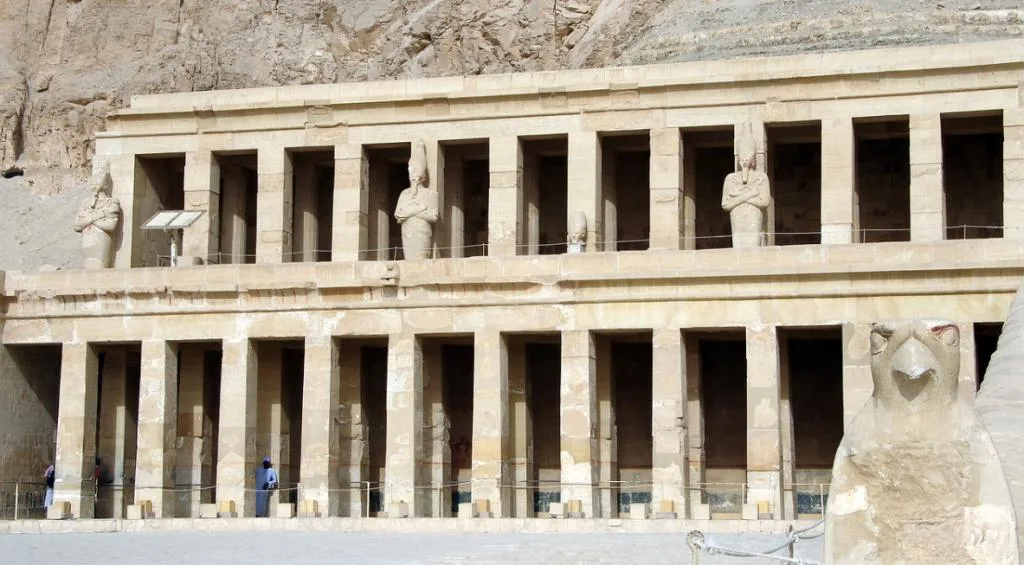
5. It had a model that stood right next to it
Hatshepsut was very keen on portraying herself as an amazing ruler, and the best way to achieve that in Ancient Egypt was to construct a massive monument. And that’s exactly what she did!
In the same area where she built her temple was the mortuary temple of Mentuhotep II, another very highly regarded pharaoh who reigned for 51 years between 2061 and 2010 B.C.
Even though the temple was an inspiration for Hatshepsut, she saw her own temple on a much larger scale, and to emphasize this, she built it right next to the much smaller temple of Mentuhotep II.
The temple of the latter was later used as a quarry so not much remains of it today.
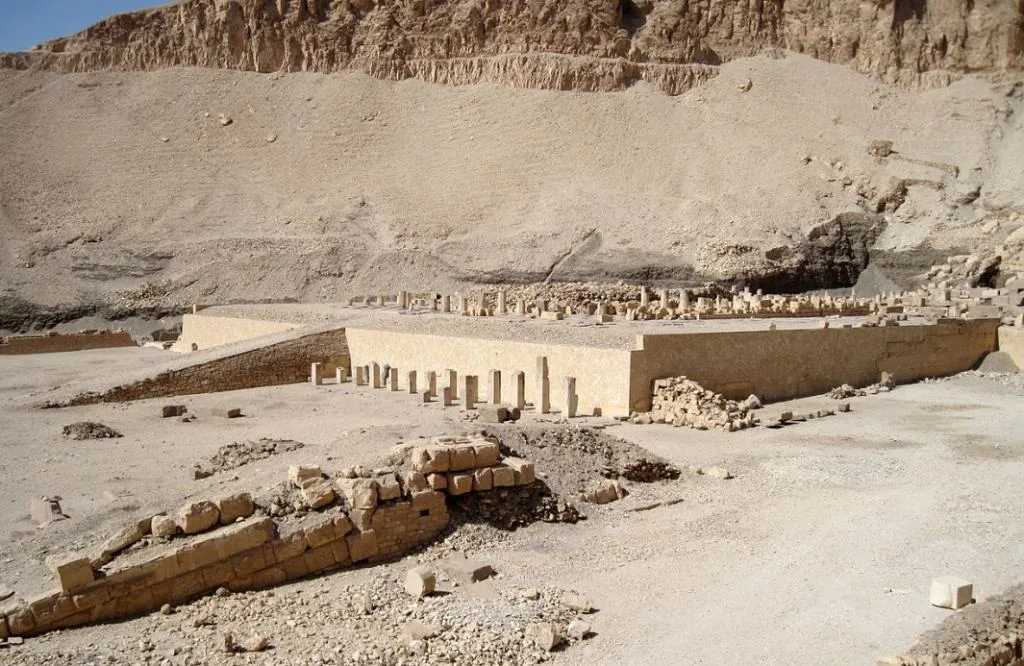
6. The temple consists of 3 levels
While the temple in honor of Mentuhotep II served as a model for the Temple of Hatshepsut, it wasn’t really a copy of it. Better yet, the layout was actually a lot different.
The main difference is that Hatshepsut’s temple consisted of 3 layered terraces that didn’t follow a centralized design, as opposed to the model temple.
Each floor is marked by a double colonnade of square pillars and the upper floor reaches a maximum height of 29.5 meters (97 ft).

7. One area consists of different pillars
There is one area in the temple that doesn’t consist of square pillars and that’s the temple’s chapel. This can be found on the northwest side of the central terrace.
The chapel employs proto-Doric pillars as opposed to the square pillars which are used in the rest of the temple.
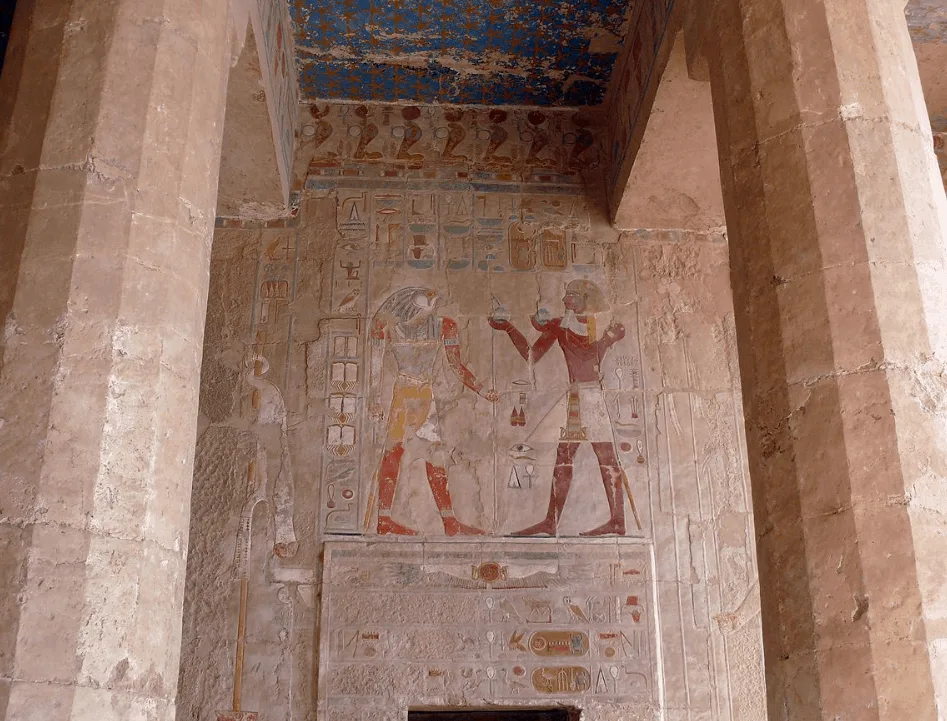
8. The temple didn’t look so desolate as it does today
One thing about Ancient Egyptian monuments is that they don’t exactly look amazing at first glance. But again, we must be reminded that these were built thousands of years ago.
The pyramids for example used to be covered in white, shiny limestone which made them shine in the sun and make them appear as stars on earth from space! The same thing applies to the temple of Hatshepsut which must have looked amazing just after it was completed.
Plus, the long ramps leading towards the temple used to be surrounded by gardens with foreign plants including frankincense and myrrh trees. This must have given the temple a completely different look than it does today, in a completely different atmosphere as well.
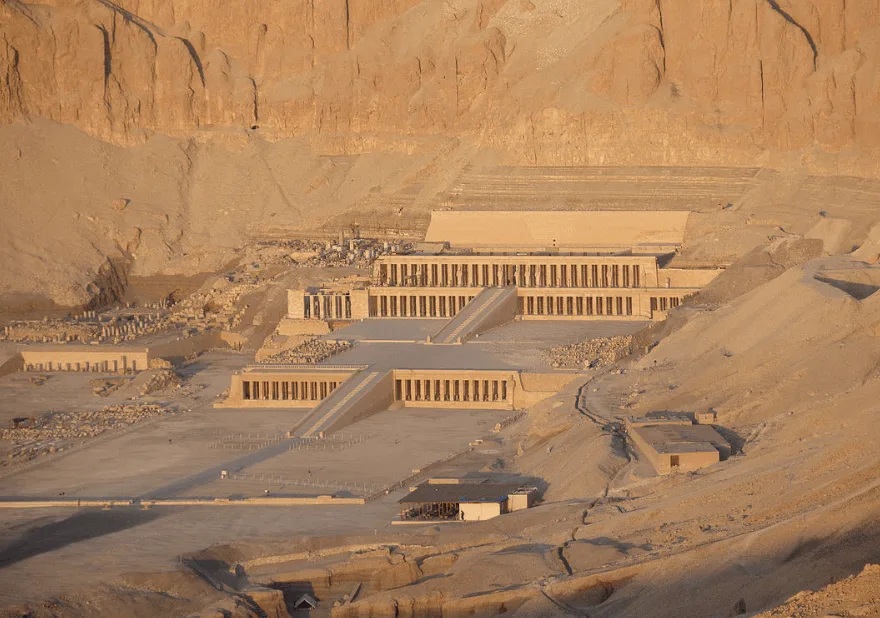
9. Hatshepsut’s stepson erased her from history
The reign of Hatchepsut was conducted together with her stepson, Thutmose III. Apparently, he wanted to be remembered as the main ruler of Egypt instead of sharing this honor with his stepmother, so he erased her name from all monuments.
This was considered to be a huge thing because erasing one’s name from history literally meant condemning somebody to non-existence in Ancient Egypt.
This also meant that this person could take the trip to the eternal afterlife because, in Ancient Egyptian culture, a person must have been remembered in order to do so.
This also means that none of the ornaments and statues of Hatshepsut that used to decorate the temple still exist.

10. He did leave one thing untouched
One of the most peculiar facts about the Temple of Hatshepsut is that her stepson, Thutmose III, left one thing regarding her existence literally untouched, which is the story of her divine birth.
This makes the story even more peculiar because when the two reigned together, there is zero evidence that there was any animosity between the two.
Could it be that he just didn’t want to see a woman reigning over Egypt in the future and wasn’t this a personal quest? Many historians believe so.
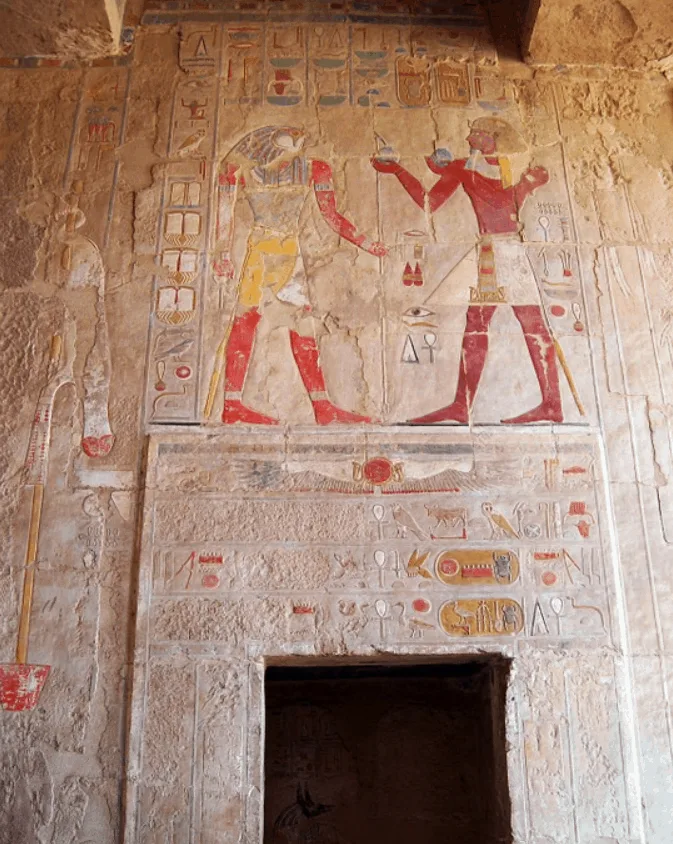
11. It’s aligned with the stars
As we all know, Ancient Egyptians were not only excellent astronomers but also amazing architects and engineers. They were able to align their most complicated structures, including the huge pyramids, with astronomical elements with enormous precision.
How did they do it? We can only guess!
The Temple of Hatshepsut is no different as it’s aligned perfectly with the winter solstice sunrise, which in modern times occurs either the 21st or 22nd of December every year.
12. An amazing effect happens during the winter solstice
When the sun rises on either the 21st or 22nd of December, an amazing thing happens inside of the temple.
On this day, a light-box appears in the center of the temple as the sun rises and first highlights the god Amun-Ra. It then moves towards the image of the kneeling Thutmose III before it finally puts the Nile god Hapi into the spotlight.
This light show again emphasizes the excellent astronomical and engineering ability of the Ancient Egyptians!
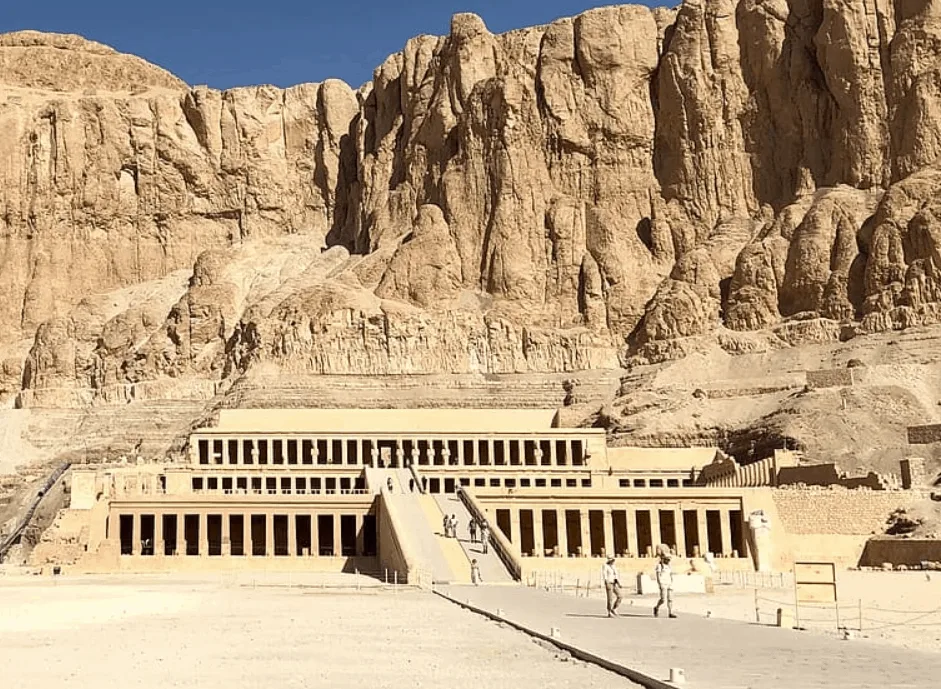
13. It’s representative of the New Egyptian Kingdom
What makes the Temple of Hatshepsut so special is that it both honors the Pharaoh who constructed it while at the same time including sanctuaries to honor the gods who would be present in her afterlife.
This way it can be described as a turning point in Ancient Egyptian mortuary architecture and one of the most remarkable monuments of Ancient Egypt altogether.

14. It’s being completely restored
The Temple was only rediscovered halfway through the 19th century when excavations near the temple and the ability to translate hieroglyphics led to the discovery of a female pharaoh. After all, all evidence of her existence had been destroyed by Thutmose III, but he dumped the evidence nearby.
The Temple has been completely restored since then and the Polish Academy of Sciences in Warsaw is responsible for the study and restoration of the three levels of the temple.
Continuous restoration efforts are being done, even though the first two levels have been completed since halfway through the 1990s.

